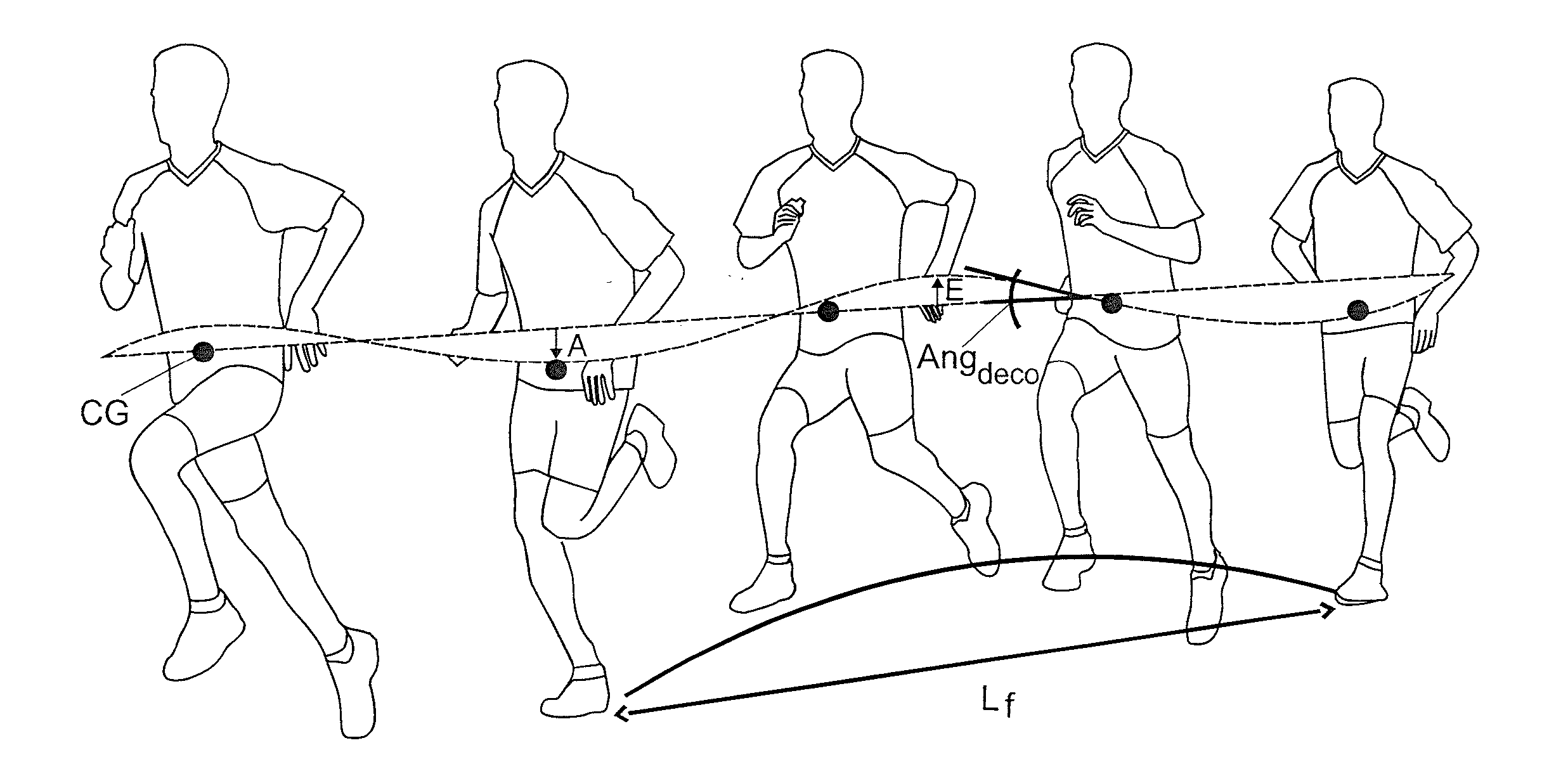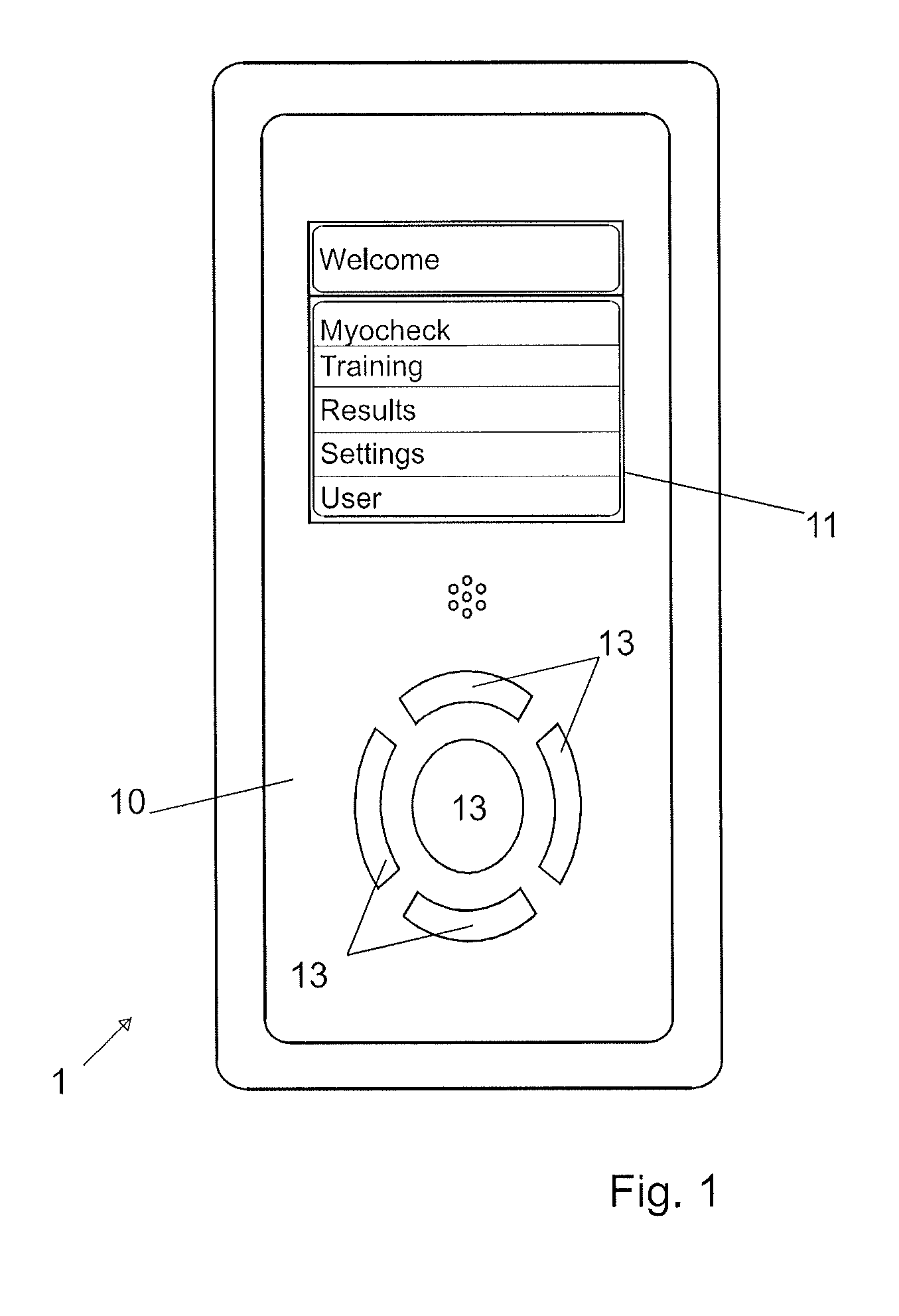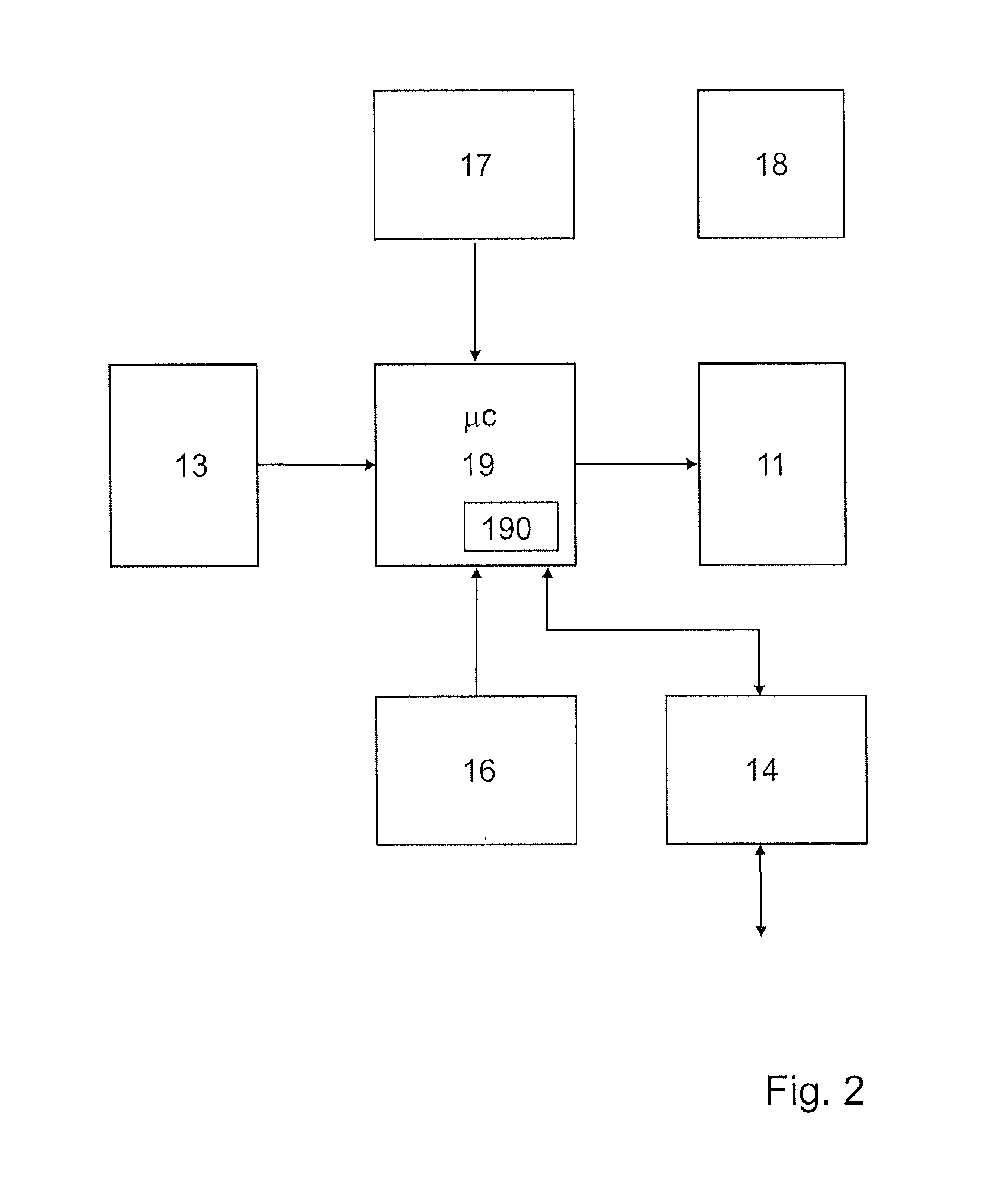Integrated portable device and method implementing an accelerometer for analyzing biomechanical parameters of a stride
- Summary
- Abstract
- Description
- Claims
- Application Information
AI Technical Summary
Benefits of technology
Problems solved by technology
Method used
Image
Examples
Embodiment Construction
[0074]An example of a device according to the invention is illustrated in FIG. 1. This device 1 includes a case, for example a plastic case with a weight of less than 100 grams, preferably less than 50 grams (including the contents). The athlete can attach this case to his / her hip, in the lower back or on the belly by means of a belt, for example an extensible belt closed by a hook-and-loop band, or a click fastened directly on the clothes. The belt allows a stable fastening close to the runner's center of gravity whilst minimizing the vibrations and displacements of the device relative to the center of mass.
[0075]The device further comprises a display 11, for example an alphanumeric or graphical display, preferably a liquid crystal display. This display makes it possible to display control menus, the memory status, the state of the battery 18 (FIG. 2), as well as numeric and qualitative parameters determined during and after the tests. Controls 13, for example buttons or other tact...
PUM
 Login to View More
Login to View More Abstract
Description
Claims
Application Information
 Login to View More
Login to View More - R&D
- Intellectual Property
- Life Sciences
- Materials
- Tech Scout
- Unparalleled Data Quality
- Higher Quality Content
- 60% Fewer Hallucinations
Browse by: Latest US Patents, China's latest patents, Technical Efficacy Thesaurus, Application Domain, Technology Topic, Popular Technical Reports.
© 2025 PatSnap. All rights reserved.Legal|Privacy policy|Modern Slavery Act Transparency Statement|Sitemap|About US| Contact US: help@patsnap.com



